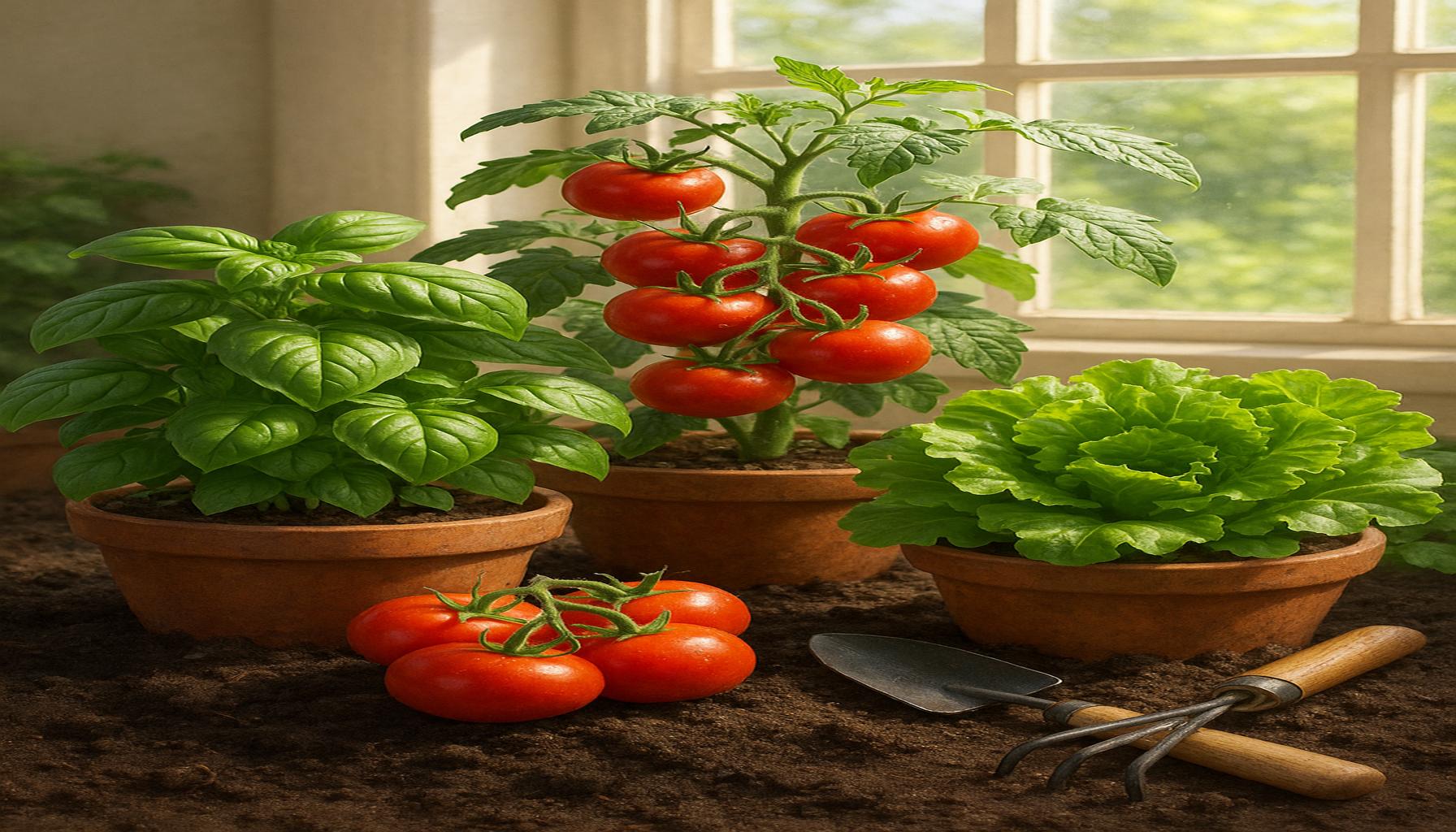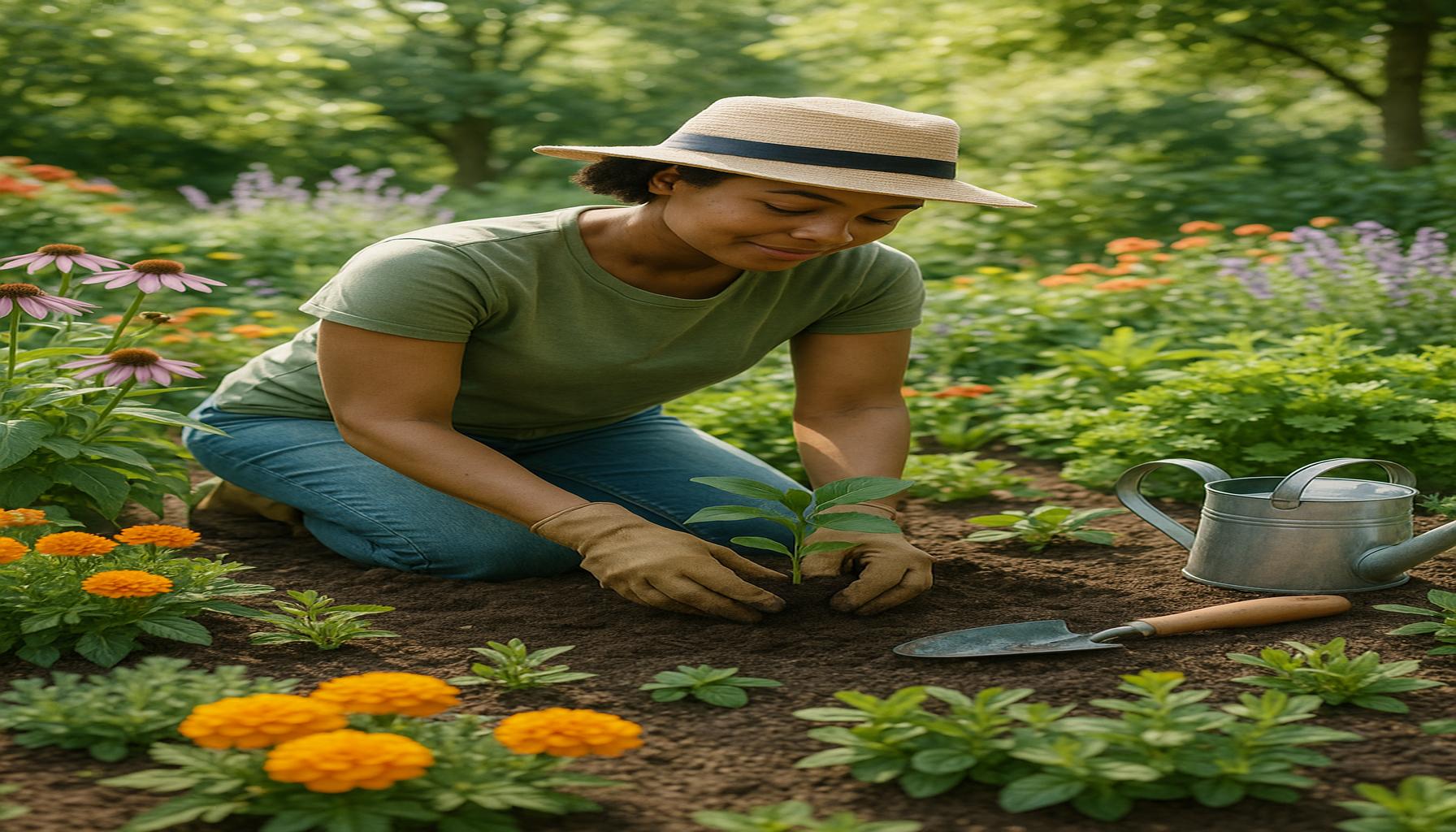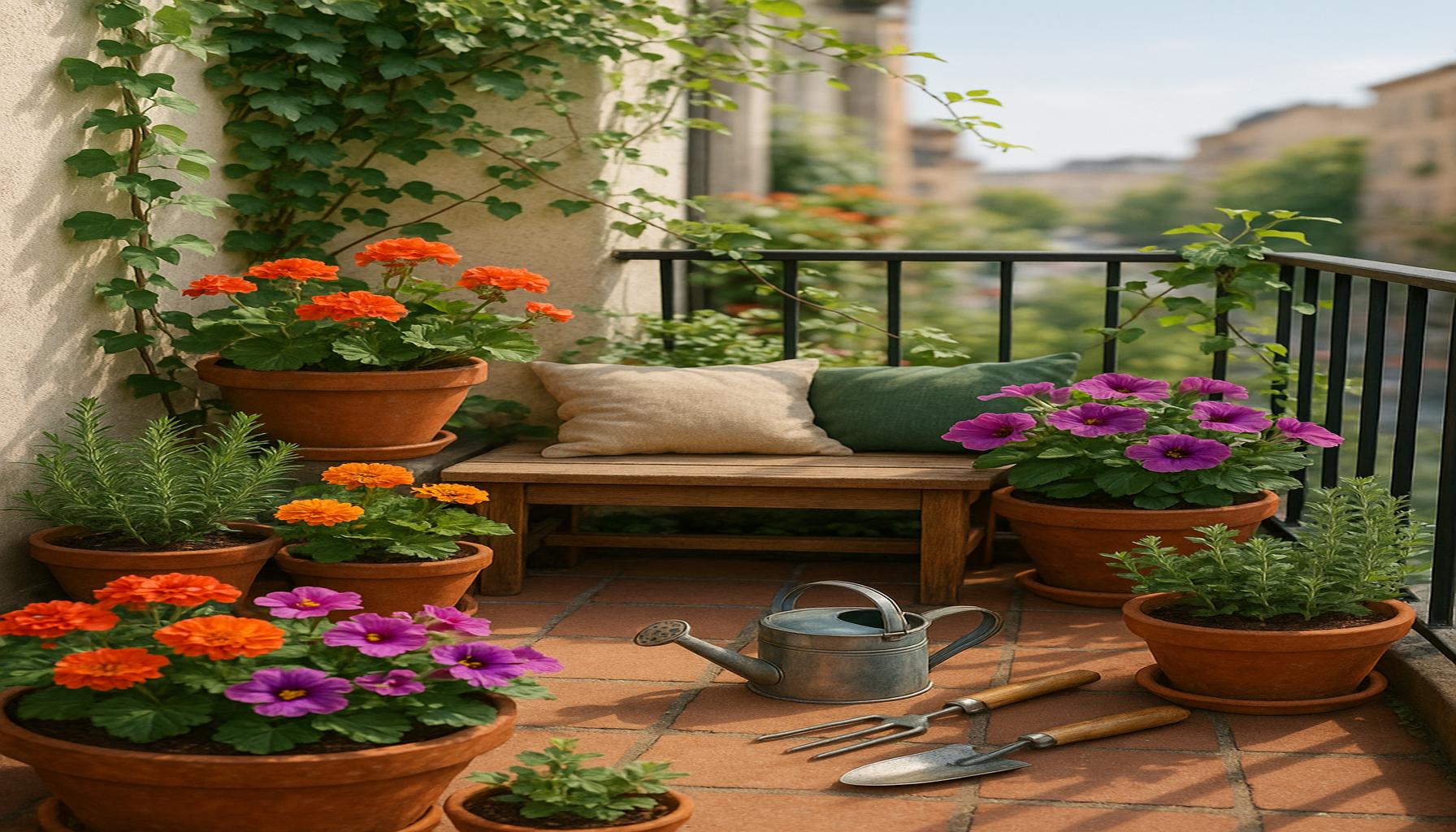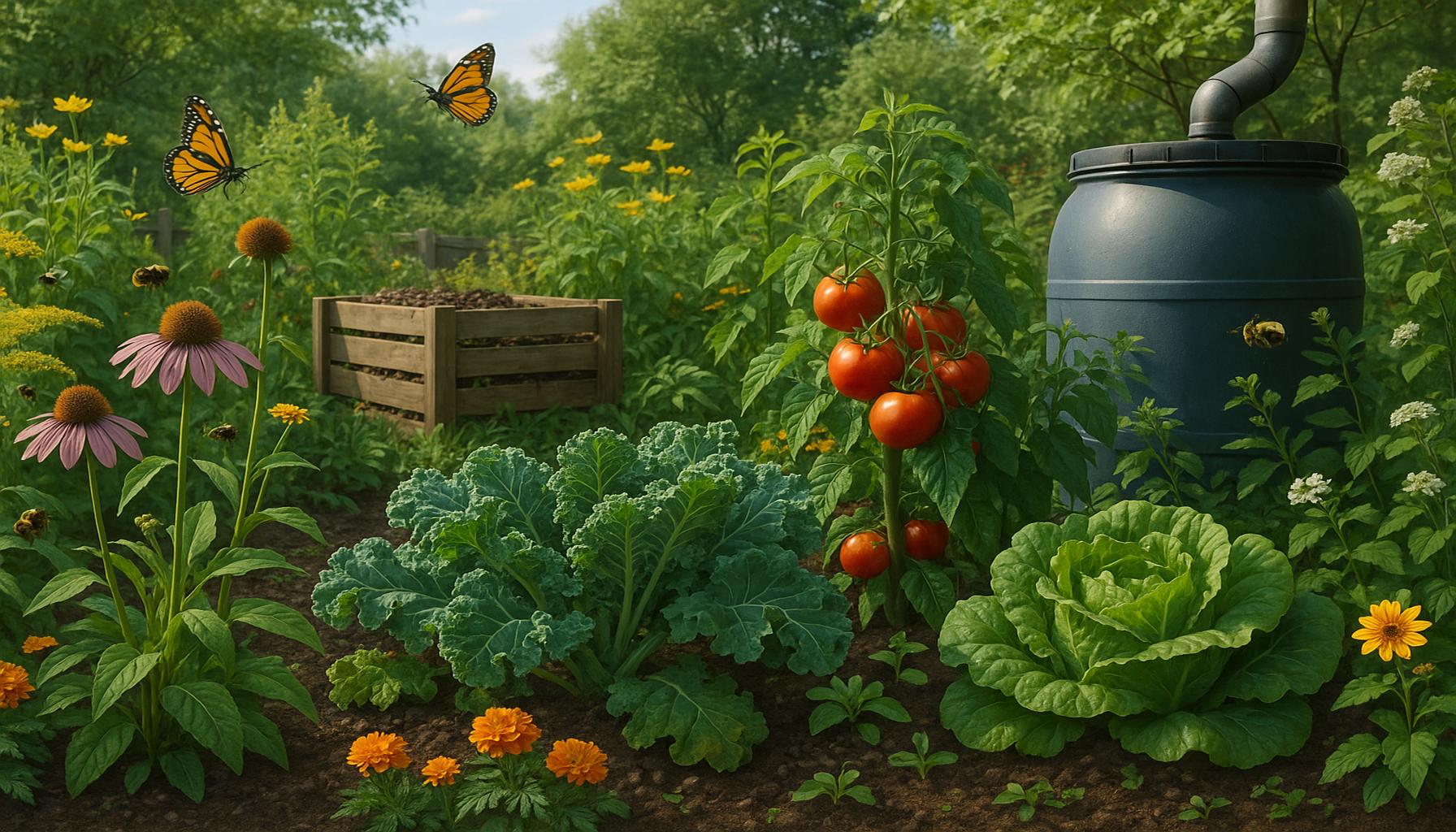Edible Plants: Growing Your Own Food at Home

The Joy of Cultivating Your Own Food
Imagine stepping into your backyard and plucking fresh, vibrant vegetables for dinner. Growing your own food at home is not just a rewarding hobby; it’s a sustainable lifestyle choice with numerous benefits. The rise of home gardening offers an exciting opportunity to explore the connection between food, environment, and personal well-being.
Home gardening encourages:
- Healthier Eating: Freshly harvested produce is packed with nutrients. Studies have shown that homegrown fruits and vegetables contain more vitamins and minerals than their store-bought counterparts, as they are often picked at peak ripeness. Eating these fresh crops can lead to a significant increase in your daily consumption of fruits and vegetables, promoting overall health.
- Environmental Impact: Reducing your carbon footprint is an essential aspect of gardening. By growing your own food, you contribute to minimizing transport emissions associated with grocery shopping. Additionally, home gardens can support local biodiversity by providing habitats for various pollinators like bees and butterflies, which are crucial for maintaining healthy ecosystems.
- Cost Savings: Growing your own food can significantly lower grocery bills and reduce the need for frequent trips to the store. For instance, a single tomato plant can produce dozens of tomatoes throughout the summer, potentially saving you money compared to purchasing them at retail prices. Furthermore, a well-planned garden can provide produce that lasts through multiple seasons.
In the United States, many families are turning to gardens, cultivating various edible plants that suit different spaces and preferences. Some common choices include:
- Tomatoes: A quintessential summer staple, tomatoes thrive in warm climates and are perfect for salads, sauces, and salsas.
- Herbs: Culinary enthusiasts often favor herbs like basil and cilantro, which can dramatically enhance the flavor of dishes ranging from pasta to tacos.
- Leafy Greens: Spinach and kale are excellent for small spaces, as they can be grown in containers and are incredibly nutritious, making them ideal for salads and smoothies.
Not only does this practice reconnect you with nature, but it also provides a sense of accomplishment. Gardening teaches vital skills such as understanding soil health, seasonal planting, and pest management. As you work with the soil, you’ll discover the joy of nurturing life from seed to harvest.
Whether you have a sprawling backyard or a small balcony, anyone can start a garden. Online platforms and local gardening clubs offer abundant resources for beginners, including tips, planting guides, and even community seed swaps that can help you kickstart your gardening journey without breaking the bank.
As you embrace the green thumb within you, remember that the road to home gardening is not only about growing food; it’s about cultivating a deeper connection with what you eat. With time, patience, and a willingness to learn, you can enjoy the incredible taste of home-grown ingredients and contribute to a sustainable future. Dive into the world of home gardening today and reap the rich rewards it brings!
DISCOVER MORE: Click here to learn about reviving traditional skills
Choosing the Right Edible Plants for Your Home Garden
As you embark on the journey of growing your own food at home, selecting the right plants is crucial for a successful gardening experience. The diversity of edible plants allows you to tailor your garden to fit your tastes, climate, and available space. Understanding which plants thrive in your environment can significantly enhance your yield and enjoyment.
Some key factors to consider when choosing edible plants include:
- Climate: Different plants have varying temperature and weather needs. For instance, warm-season crops like tomatoes and peppers flourish in summer heat, whereas cool-season crops like lettuce and peas prefer the milder temperatures of spring and fall. Assess your USDA Plant Hardiness Zone to determine which plants are best suited for your area.
- Available Space: Not everyone has the luxury of a large garden, and that’s completely okay! Many edible plants can thrive in containers or raised beds, making them perfect for small patios or balconies. Herbs, salad greens, and dwarf varieties of fruit trees are excellent choices for urban gardeners with limited space.
- Personal Preferences: Consider what you and your family enjoy eating. If you’re a fan of fresh salsa, prioritize growing tomatoes, cilantro, and jalapeños. For smoothie lovers, leafy greens like kale, spinach, and herbs like mint can become staples in your garden.
Once you’ve determined the ideal plants for your demo garden, it’s beneficial to understand their growing requirements. For instance, tomatoes need full sun for at least six hours a day and well-drained soil, while herbs like basil thrive in slightly drier conditions. Moreover, some plants have pest deterrent properties, making them excellent companions for more delicate crops. For example, planting marigolds alongside tomatoes can help ward off nematodes and other pests.
Moreover, many gardeners find joy in experimenting with heirloom varieties—plants that have been passed down through generations. These unique strains not only offer distinct flavors but also contribute to preserving biodiversity in food sources. By cultivating these heirlooms, you can enjoy not only the taste but also the rich history tied to them.
Starting a home garden can also educate families about where their food comes from. Involving children in planting and harvesting can instill a sense of responsibility and appreciation for nature’s bounty. Garden activities are not only educational but also fun, creating lasting memories as you all savor the fruits of your labor together.
As you decide on the plants to include in your garden, remember that patience is paramount. Gardening doesn’t always yield immediate results, and some plants can take longer to mature than others. However, with consistent care and attention, the thrill of nurturing these edible plants from seed to plate is truly rewarding.
In the subsequent sections, we will explore how to prepare your garden, including soil health, planting techniques, and maintenance practices to ensure a vibrant and productive edible landscape at home.
| Benefits of Growing Edible Plants | Aspects of Home Gardening |
|---|---|
| Nutritional Value | Home-grown produce is often richer in essential nutrients. |
| Cost Savings | Growing your own food reduces grocery bills significantly over time. |
| Environmental Benefits | Gardening at home can lead to a reduction in carbon footprint. |
| Variety of Choices | Grow a diverse range of edible plants not typically found in stores. |
| Education and Skills | Gaining knowledge about plant seasons, growth cycles, and care. |
Growing your own food at home doesn’t just offer a bounty of fresh produce; it engages gardeners in a delightful journey of discovery. Each plant grown delivers a unique story of care and cultivation, promoting a deeper connection to what we eat. For example, incorporating herbs can elevate the flavors of everyday meals while providing a sense of personal achievement as you harvest them.Moreover, edible gardening invites adventurous culinary experimentation. It opens the door to various cooking techniques, including fermenting or preserving your harvest, enabling the luscious flavors of seasonal fruits and vegetables to be enjoyed year-round. Home gardening is not just about feeding the body; it fosters creativity and resourcefulness—traits that are invaluable in today’s fast-paced world. Through simple steps like composting, even waste can become a vital part of your garden’s ecosystem, emphasizing sustainability and respect for nature. The journey of cultivating edible plants at home heralds a new era of food independence and environmental consciousness, making it a highly relevant and rewarding pursuit for many.
DIVE DEEPER: Click here to learn more about the revival of calligraphy
Preparing Your Garden for Edible Plants
Once you’ve made your selections of edible plants that align with your climate and preferences, the next step is to prepare your garden. A well-prepared garden not only enhances the growth of your plants but also leads to a more fruitful harvest. Let’s examine the essential components of garden preparation, covering soil health, planting techniques, and ongoing maintenance.
Soil Health: The Foundation of a Thriving Garden
The health of your soil plays a critical role in how well your edible plants will grow. Before planting, conduct a simple soil test to understand its pH level and nutrient content. Most edible plants prefer slightly acidic to neutral soil (pH 6.0-7.0). Based on your soil test results, you may need to amend your soil with materials such as compost, manure, or organic fertilizers to enhance its nutrient profile.
Incorporating organic matter into your soil not only improves its fertility but also enhances moisture retention and soil structure. Adding compost can introduce beneficial microorganisms that help in the decomposition process, creating a living soil teeming with nutrients. Additionally, consider practicing crop rotation—a method where you change the planting location of your crops annually. This not only helps prevent soil nutrient depletion but also keeps pests and diseases at bay.
Planting Techniques: Timing and Spacing
Timing is everything when it comes to planting. To give your garden the best chances of success, adhere to the recommended planting dates for your chosen plants. Most seed packets provide guidance on when to sow or transplant seeds, taking local frost dates into consideration. Utilizing a planting calendar specific to your region can ensure you hit the sweet spot for each crop.
When planting, pay careful attention to spacing. Overcrowding can lead to competition for nutrients and sunlight, while too much space can waste valuable garden real estate. Consult seed packets or reliable gardening resources for recommended spacing, and utilize techniques such as interplanting—planting complementary species in close proximity, which maximizes space and promotes a healthy garden ecosystem.
Maintenance Practices: Watering, Weeding, and Pest Control
After planting your edible garden, regular maintenance is crucial. Consistent watering, especially during dry spells, is vital for young plants. It’s often best to water deeply but less frequently, encouraging roots to grow deeper into the soil. Additionally, mulch can be applied around the plants to help retain moisture and suppress weed growth.
Weeds can be a gardener’s worst foe, stealing nutrients and space from your edible plants. Regularly check your garden and remove weeds by hand or with garden tools. Implementing a weed management plan can save you time and effort in the long run.
Pest control is another vital aspect of maintaining a healthy garden. While some pests can be beneficial, others can wreak havoc on your plants. Monitor your garden closely and consider using natural deterrents like neem oil or insecticidal soap. Furthermore, introducing beneficial insects, such as ladybugs and lacewings, can help keep harmful pests in check without resorting to chemical pesticides.
Lastly, don’t forget to enjoy the journey! Gardening is not just about the end result—cultivating your edible plants offers physical activity and mental relaxation. Embrace the learnings that come with each season, and savor each step as you create a lush landscape full of delectable possibilities.
DISCOVER MORE: Click here to delve into the mental health benefits of journaling
Conclusion: Embrace the Bounty of Home Gardening
In conclusion, cultivating edible plants at home not only promotes healthier eating habits, but also reconnects us with nature and provides a rewarding hobby that can be embraced by individuals of all ages. By understanding the importance of soil health, optimal planting techniques, and diligent maintenance, you can create a thriving garden that yields an impressive harvest of fresh produce.
Growing your own food allows for a sustainable lifestyle choice, reducing reliance on commercially grown produce that often travels long distances. Moreover, selecting organic gardening practices can contribute to a healthier environment, fostering biodiversity and reducing the need for chemical pesticides. Whether you dream of a sprawling vegetable garden or a compact container setup on your balcony, there are options tailored to any space.
As you embark on your gardening journey, remember that patience and experimentation are key components. Each season presents unique challenges and opportunities to learn, making it essential to adapt your methods and optimize strategies for success. Consider joining local gardening groups or online forums where you can share experiences and gain insights from fellow enthusiasts.
Ultimately, growing edible plants is about more than just food; it fosters a deeper appreciation for the process of cultivation, encourages physical activity, and promotes mindfulness in an increasingly fast-paced world. So grab your seeds, dig into the soil, and watch as your efforts blossom into a delightful garden filled with flavor and nourishment. Your culinary creations await!


